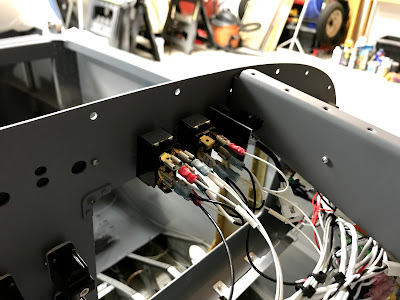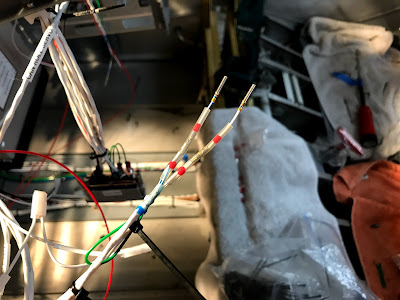- Permanently installed transponder and communication radio antennae - However I still need to put sealant around exterior
- Installed wiring for both main and auxiliary battery buses. This consists of a Blue Sea fuse holder mounted on the firewall and 10 awg wire running to the bus bars behind the instrument panel. These wires connect directly to each battery and will provide redundant power for each electronic ignition, the g3x and the electric fuel pump.
- I also received my 12 volt / 30 amp power supply. I got this unit off of ebay. It's marketed towards ham radio users and provides clean power. Pricing was very reasonable. I connected the cord and used some leftover wire to make leads to connect to the aircraft electrical system.
- I went ahead and connected the seat heater on the left side. With the new power supply I can run all the avionics and the seat heater for as long as I want. The seat heater worked great with the exception of the indicator LED in the switch. I was able to find a replacement switch on ebay so I ordered several to have a spare for the future.
Power supply hooked to main battery leads:
Main battery bus fuse holder:
Aux battery bus fuse holder (wires will be secured later with cushion clamps)
Comm antenna:
Transponder antenna:







































